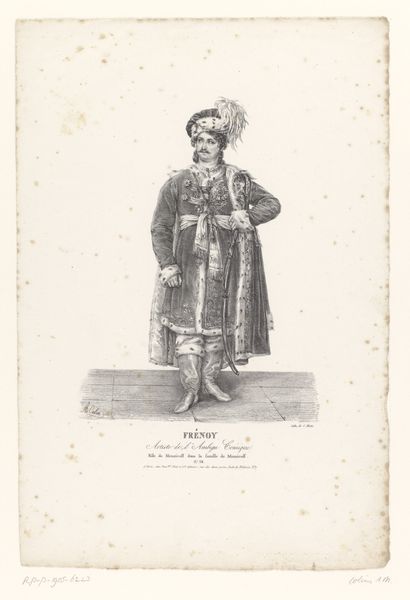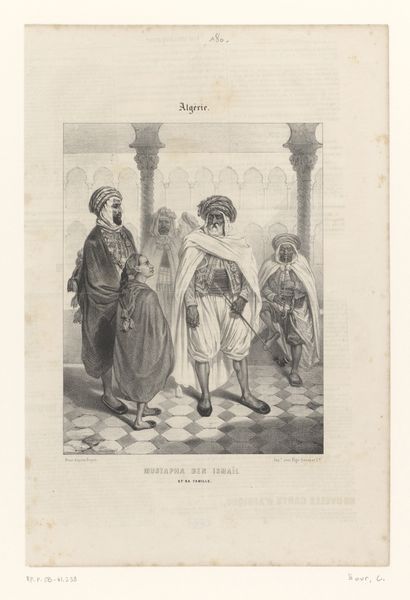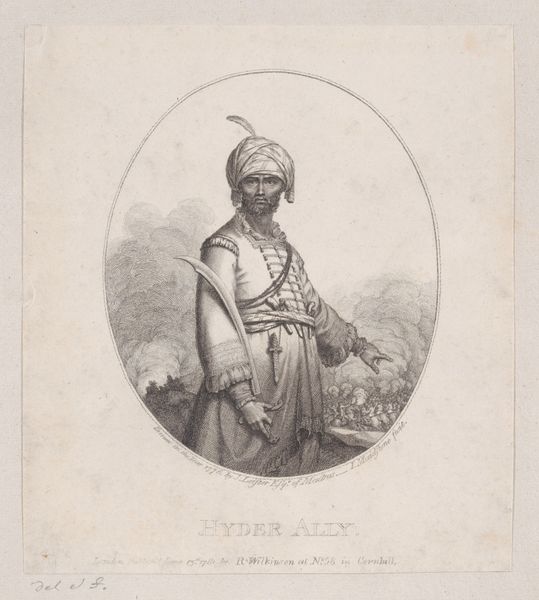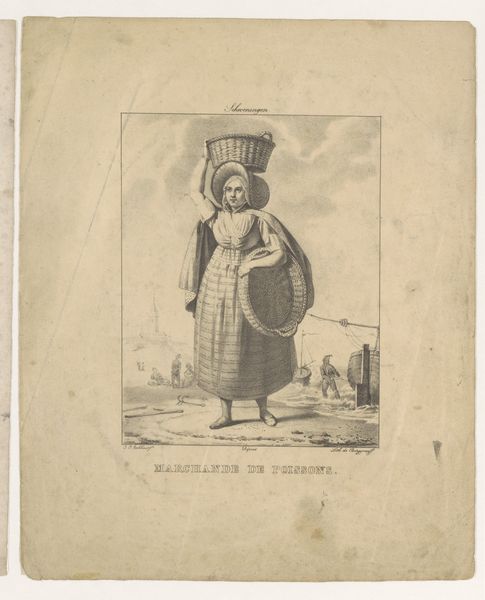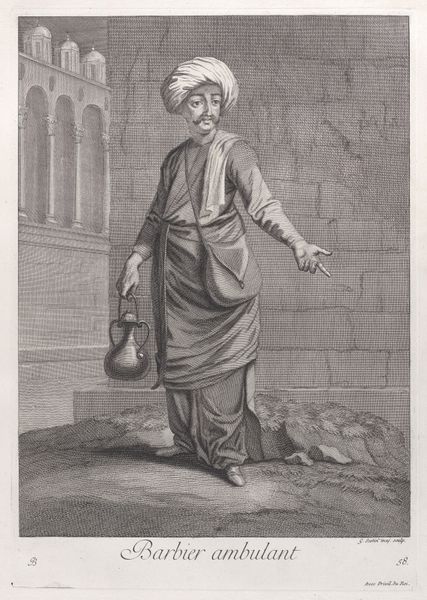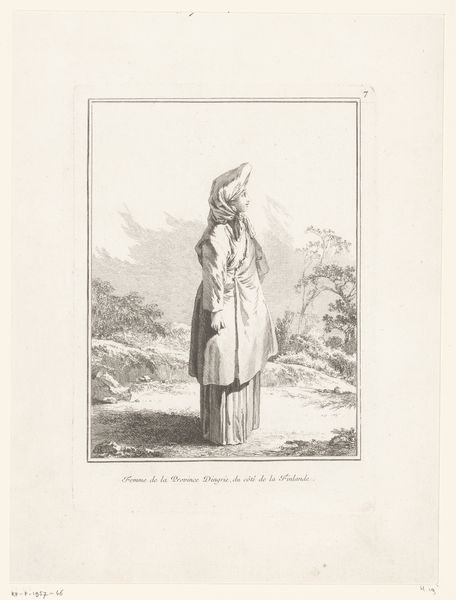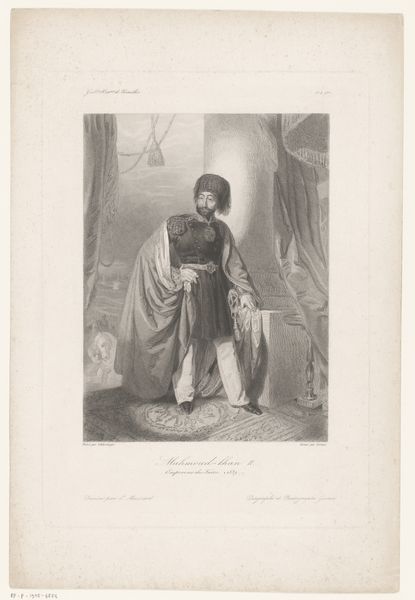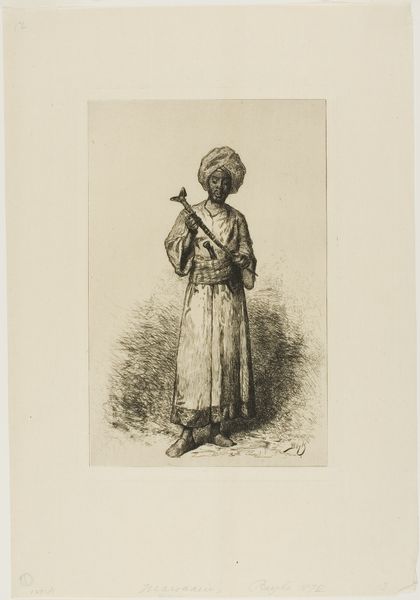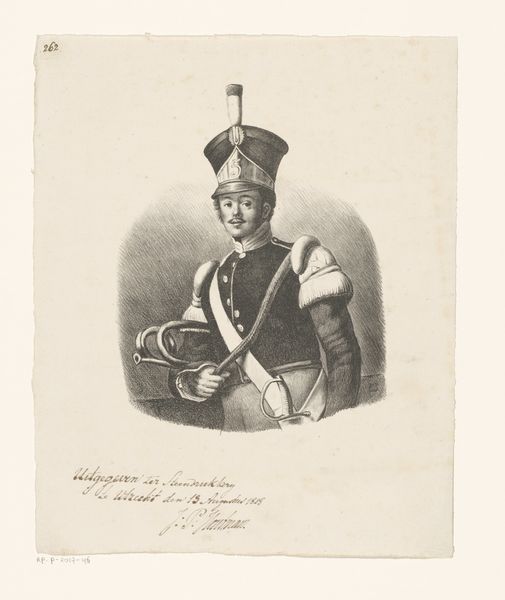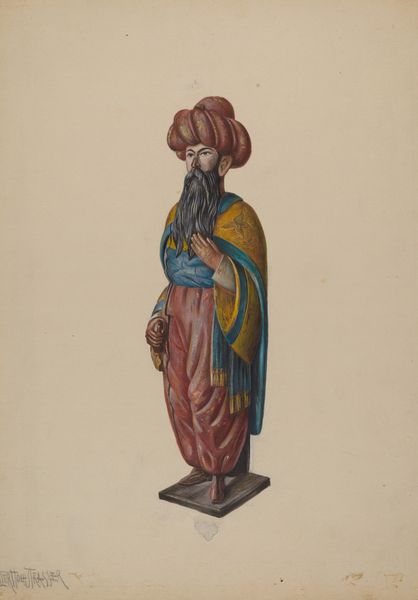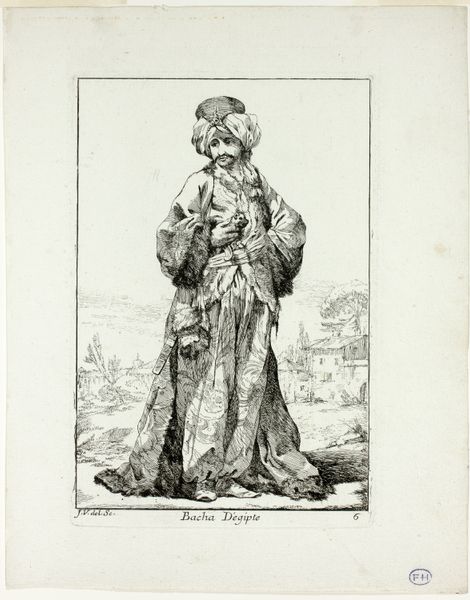
print, engraving
#
portrait
# print
#
figuration
#
romanticism
#
history-painting
#
engraving
Dimensions: height 426 mm, width 289 mm
Copyright: Rijks Museum: Open Domain
Curator: This is an engraving from 1823 by Alexandre-Marie Colin, titled “Portret van Paulin Ménier als Almanzor in het melodrama Abenhamet.” Editor: Almanzor looks contemplative, doesn’t he? Almost melancholic. There's something in the rendering of light that evokes that Romantic fascination with the self, but also perhaps a premonition of doom. Curator: Yes, the work highlights Romanticism through the depiction of this figure drawn from a historical melodrama, and how it blends with contemporary society by picturing an actor. It speaks to the theatricality of identity, perhaps. The print itself—engraved lines forming textures—demonstrates a process that allowed for a wider distribution of these images, influencing public perceptions of history. Editor: Right, engravings allowed images to reach a much broader audience. I wonder what it was like for Ménier, the actor, to see himself immortalized like this? And placed in what seems like an exotic locale... sort of stage-set exotic, don't you think? Almost playful? Curator: Precisely. This representation ties into the broader social context: an era of intense European interest in "the Orient", expressed through decorative motifs, musical themes and costuming, and fed by both scholarly pursuits and colonial aspirations. Note the turban, the sash, even the way the trousers puff—elements drawn not from lived experience, necessarily, but from other visual sources that served as stand-ins for accurate details. The labor involved, both of the actor in embodying this role and of the engraver translating it onto paper, creates layers of artifice. Editor: It makes you wonder about authenticity. Not just whether his portrayal of Almanzor was believable, but the whole idea of representing anything accurately through artifice and mass production. This piece kind of revels in its own constructed-ness, doesn't it? Curator: Indeed. Consider too, how the choice of printmaking as a medium connects to larger industrial processes. It emphasizes the commodification of images and, by extension, historical narratives, as consumer products. The materiality of the print becomes crucial. It's about more than just the final image, but the matrix of social relations of labor that allows that image to circulate within the culture. Editor: Right, it's a multi-layered portrayal. What a fantastic rabbit hole we have traveled. Curator: Absolutely, and from these explorations, perhaps some visitors can better appreciate not just the portrait, but its impact as a widely consumed item within broader historical currents.
Comments
No comments
Be the first to comment and join the conversation on the ultimate creative platform.
